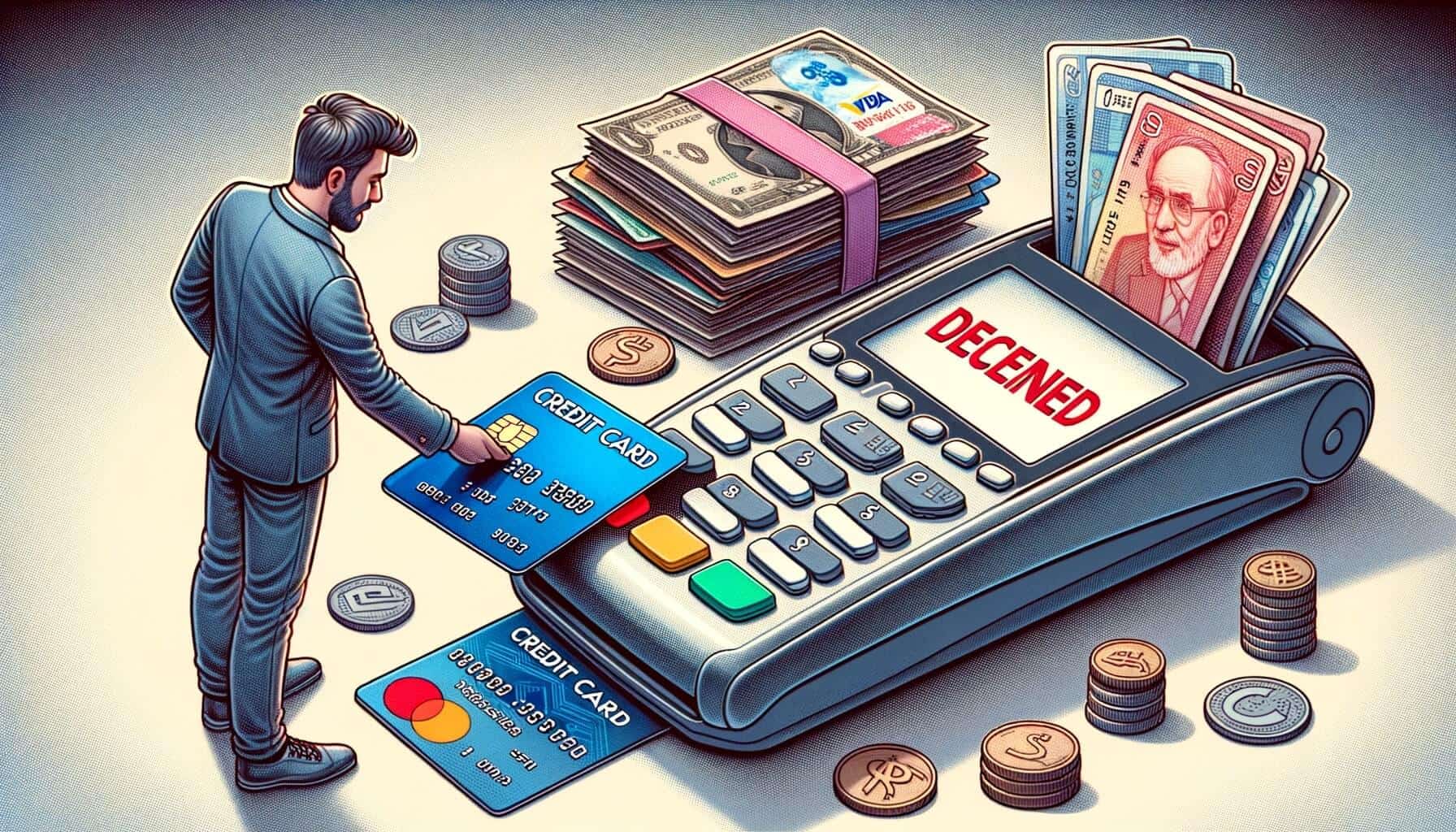
By Carol Peters December 27, 2024
In today’s digital age, credit card transactions have become the norm for both online and offline purchases. However, amidst the convenience and ease of credit card processing, there is a lurking issue that can cause frustration and financial loss for both merchants and customers – false declines. A false decline occurs when a legitimate credit card transaction is mistakenly rejected by the payment processor or issuing bank.
This can happen due to various reasons, such as outdated fraud detection systems, technical glitches, or even human error. In this comprehensive article, we will delve into the intricacies of false declines in credit card processing, understanding their causes, exploring their impact on merchants and customers, and discussing strategies to minimize their occurrence.
Understanding the Causes of False Decline

False decline can be attributed to a multitude of factors, ranging from outdated fraud detection systems to overzealous risk management practices. One of the primary causes of false decline is the reliance on outdated fraud detection algorithms that fail to keep up with evolving fraud patterns. These algorithms often use rigid rules and thresholds, leading to a high number of false positives.
Additionally, technical glitches in the payment processing infrastructure can also result in false decline. For example, a connectivity issue between the merchant’s payment gateway and the issuing bank can cause a legitimate transaction to be declined.
Another significant cause of false decline is the fear of chargebacks and fraud. Merchants and payment processors often adopt a risk-averse approach to protect themselves from potential losses. This cautious mindset can lead to an overzealous decline of transactions that may appear suspicious but are, in fact, legitimate. Furthermore, human error can also contribute to false decline. In some cases, customer service representatives may misinterpret or mishandle certain transactions, leading to unnecessary declines.
Impact of False Declines on Merchants and Customers

The impact of false declines can be far-reaching and detrimental for both merchants and customers. For merchants, false decline can result in lost sales and revenue. According to a study conducted by Javelin Strategy & Research, false decline cost merchants an estimated $118 billion globally in 2020.
This loss is not only due to the immediate revenue loss from declined transactions but also the potential loss of customer trust and loyalty. Customers who experience false declines may become frustrated and choose to take their business elsewhere, resulting in long-term financial repercussions for the merchant.
On the customer side, false decline can cause inconvenience and frustration. Imagine being at a store, ready to make a purchase, only to have your credit card declined for no apparent reason. This can lead to embarrassment and a negative shopping experience.
Moreover, false declines can also impact a customer’s credit score. When a transaction is declined, it can trigger a temporary decrease in the customer’s credit utilization ratio, which is a factor considered in credit scoring models. This can potentially affect the customer’s ability to obtain credit in the future.
Common Signs and Red Flags of False Declines

Recognizing the signs and red flags of false declines is crucial for both merchants and customers. By understanding these indicators, merchants can take proactive measures to minimize false declines, while customers can be better prepared to handle such situations. Some common signs of false decline include:
1. Inconsistent Decline Patterns: If a merchant notices a sudden increase in declined transactions without any apparent reason, it could be an indication of false decline.
2. High Decline Rates for Specific Products or Services: If certain products or services consistently experience a higher decline rate compared to others, it may be a sign of false decline.
3. Unusual Decline Reasons: If the decline reasons provided by the payment processor or issuing bank seem vague or unrelated to the transaction, it could be an indication of a false decline.
4. Customer Complaints: If customers frequently complain about declined transactions despite having sufficient funds or a good credit history, it may be a sign of false decline.
Strategies to Minimize False Declines in Credit Card Processing

To minimize the occurrence of false declines, merchants can implement various strategies and best practices. These strategies aim to strike a balance between fraud prevention and ensuring a seamless customer experience. Some effective strategies to minimize false declines include:
1. Regularly Update Fraud Detection Systems: Merchants should invest in advanced fraud detection systems that utilize machine learning algorithms and artificial intelligence to adapt to evolving fraud patterns. Regular updates and enhancements to these systems can help reduce false decline.
2. Fine-tune Risk Management Rules: Merchants should review and fine-tune their risk management rules to strike a balance between fraud prevention and minimizing false decline. This can involve adjusting thresholds, revising rules, and incorporating feedback from customers and payment processors.
3. Implement Real-time Transaction Monitoring: Real-time transaction monitoring allows merchants to analyze and assess transactions as they occur, enabling them to identify potential fraud indicators without unnecessarily declining legitimate transactions.
4. Improve Communication with Payment Processors: Establishing open lines of communication with payment processors and issuing banks is crucial. Merchants should regularly communicate with their payment partners to address any concerns, clarify decline reasons, and seek guidance on reducing false declines.
Importance of Accurate Fraud Detection Systems
Accurate fraud detection systems play a pivotal role in minimizing false declines while effectively preventing fraudulent transactions. These systems utilize advanced technologies such as machine learning and artificial intelligence to analyze vast amounts of data and identify patterns indicative of fraudulent activity. By accurately distinguishing between legitimate and fraudulent transactions, these systems can significantly reduce false declines, ensuring a seamless customer experience while maintaining robust fraud prevention measures.
Role of Machine Learning and AI in Reducing False Declines
Machine learning and artificial intelligence (AI) have revolutionized the field of fraud detection and prevention. These technologies have the ability to analyze vast amounts of data, identify complex patterns, and make real-time decisions. In the context of reducing false declines, machine learning algorithms can learn from historical transaction data and adapt to evolving fraud patterns. By continuously improving their accuracy, these algorithms can significantly reduce false declines while effectively detecting and preventing fraudulent transactions.
Best Practices for Merchants to Handle False Declines
When faced with false declines, merchants should adopt best practices to handle the situation effectively and minimize the impact on their business and customers. Some best practices for merchants to handle false declines include:
1. Promptly Investigate Decline Reasons: Merchants should promptly investigate the reasons provided for a decline and reach out to the payment processor or issuing bank for clarification if necessary. This can help identify any potential errors or misunderstandings.
2. Provide Clear Instructions to Customer Service Representatives: Merchants should ensure that their customer service representatives are well-trained and equipped with clear instructions on how to handle false declines. This includes providing guidelines on when to escalate a decline issue and how to communicate with customers effectively.
3. Offer Alternative Payment Methods: To minimize customer frustration and lost sales, merchants should offer alternative payment methods, such as PayPal or mobile wallets, in addition to credit card processing. This provides customers with more options to complete their transactions successfully.
4. Educate Customers on False Declines: Merchants can proactively educate their customers about false declines and the potential reasons behind them. This can be done through informative blog posts, FAQs on the website, or even in-store signage. By raising awareness, merchants can help customers understand that false declines are not necessarily indicative of fraudulent activity.
Frequently Asked Questions about False Declines
Q1. What is a false decline in credit card processing?
A false decline in credit card processing occurs when a legitimate credit card transaction is mistakenly rejected by the payment processor or issuing bank. This can happen due to various reasons, such as outdated fraud detection systems, technical glitches, or even human error.
Q2. How do false declines impact merchants?
False declines can result in lost sales and revenue for merchants. Additionally, false declines can also lead to a loss of customer trust and loyalty, potentially impacting the merchant’s long-term financial success.
Q3. Can false declines affect a customer’s credit score?
Yes, false declines can potentially impact a customer’s credit score. When a transaction is declined, it can trigger a temporary decrease in the customer’s credit utilization ratio, which is a factor considered in credit scoring models.
Q4. How can merchants minimize false declines?
Merchants can minimize false declines by regularly updating their fraud detection systems, fine-tuning risk management rules, implementing real-time transaction monitoring, and improving communication with payment processors.
Q5. What role does machine learning and AI play in reducing false declines?
Machine learning and AI play a crucial role in reducing false declines by analyzing vast amounts of data, identifying patterns indicative of fraudulent activity, and continuously improving their accuracy in distinguishing between legitimate and fraudulent transactions.
Conclusion
False declines in credit card processing can have significant financial and reputational consequences for both merchants and customers. Understanding the causes of false declines, recognizing the signs and red flags, and implementing effective strategies to minimize their occurrence are essential for a seamless and secure payment experience.
By investing in advanced fraud detection systems, leveraging machine learning and AI technologies, and adopting best practices, merchants can strike a balance between fraud prevention and customer satisfaction. Ultimately, reducing false declines not only benefits merchants by preserving revenue and customer loyalty but also enhances the overall trust and efficiency of the credit card processing ecosystem.
